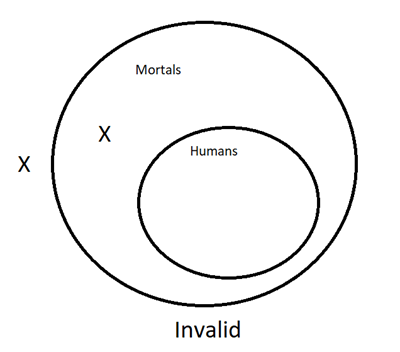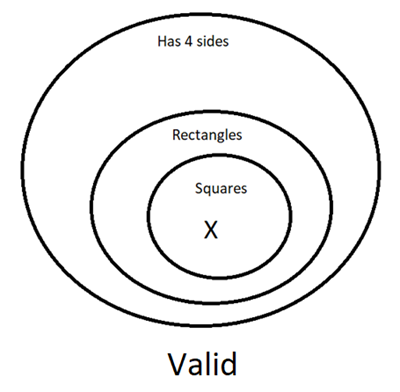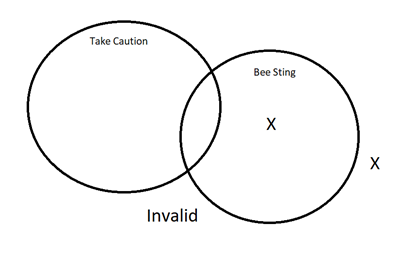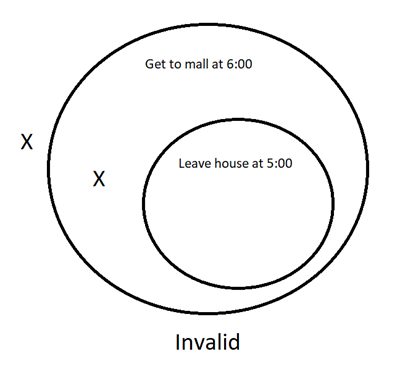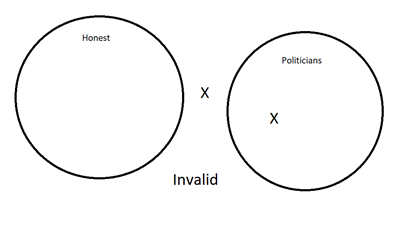Linear Modeling and Logic Unit
4.8 and 4.9 Review
Venn Diagrams and Deductive Arguments
- Draw a Venn Diagram to represent the following information and answer the questions.
100 college freshmen were interviewed
28 students were registered for a math class
31 students were registered for an English class
42 students were registered for a Psychology class
9 students were registered for both math and English
10 students were registered for both English and Psychology
6 students were registered for both math and Psychology
4 students were registered for all three types of classes
- How many students took none of these three subjects?
- How many students took math, but not English or Psychology?
- How many students took math and English, but not Psychology?
20
17
5
- Premise: All humans are mortal.
Premise: Cassie is not human.
Conclusion: Cassie is not mortal.
- Premise: All squares are rectangles.
Premise: All rectangles have four sides.
Conclusion: All squares have four sides.
- Premise: Some bees may sting you when you do not take caution around them.
Premise: Taylor was not careful when she played in the field where many bees are known to reside.
Conclusion: Taylor was stung by a bee.
- Premise: If I leave my house at 5:00pm, I will get to the mall at 6:00pm.
Premise: I left my house at 5:30pm.
Conclusion: I made it to the mall by 6:00pm.
- Premise: There are no politicians who are honest.
Premise: Garrett Poindexter is a dishonest man.
Conclusion: Garrett Poindexter is a politician.
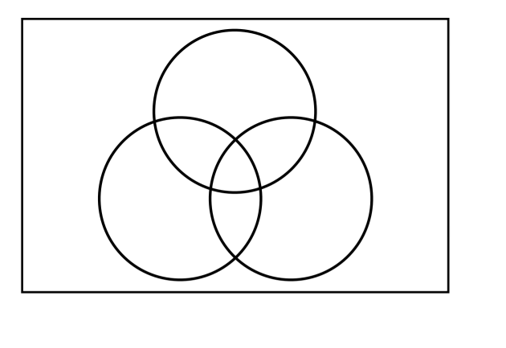
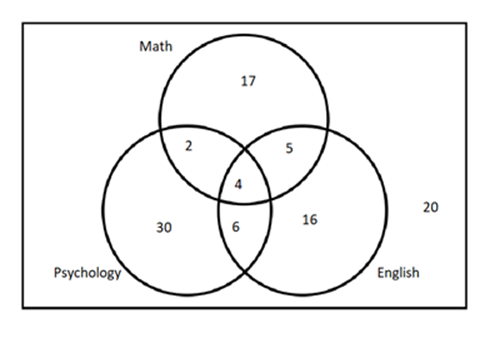
Using a Venn diagram, determine if the following arguments are valid or invalid.
